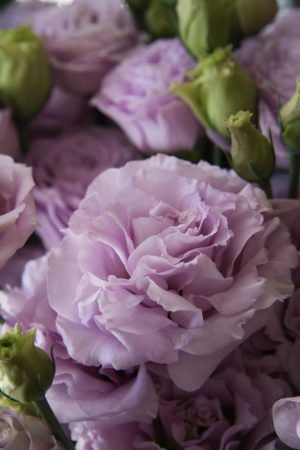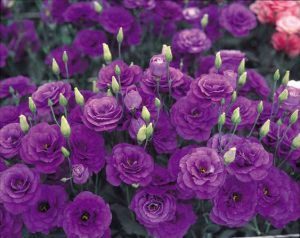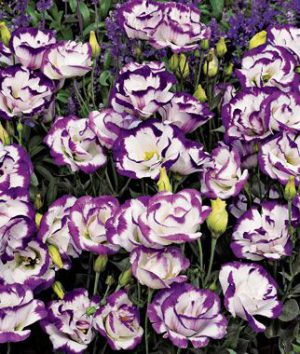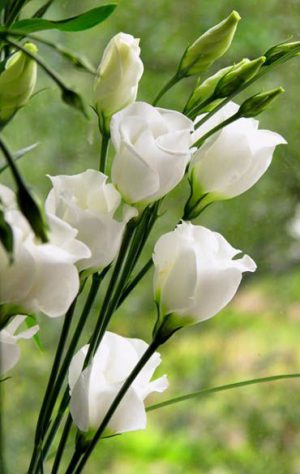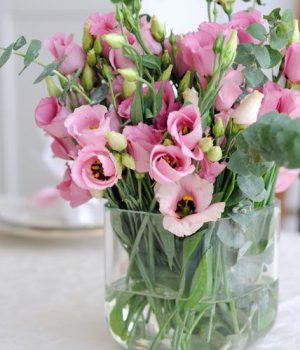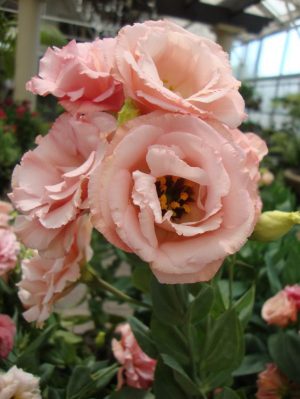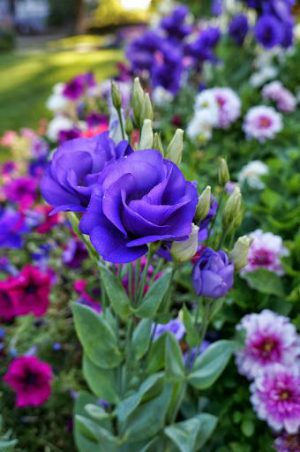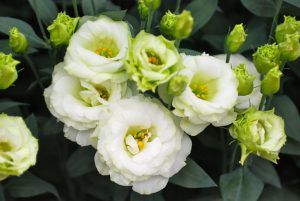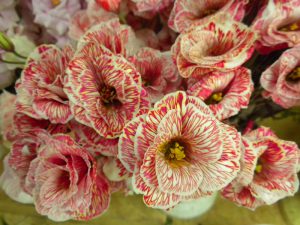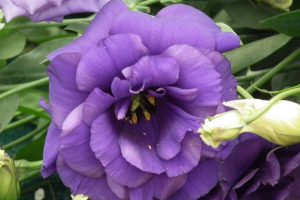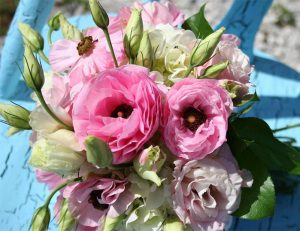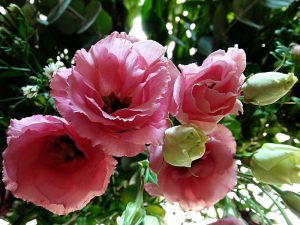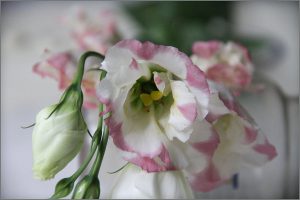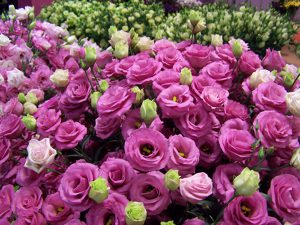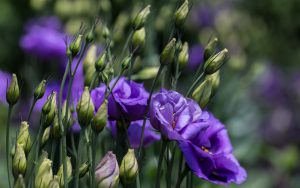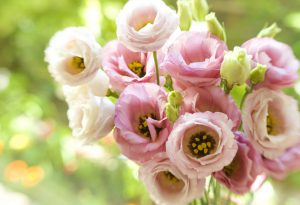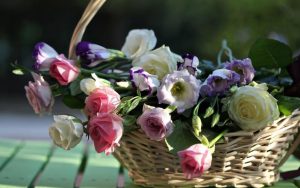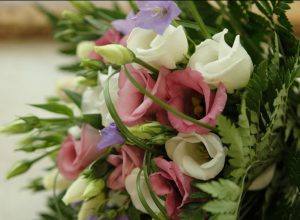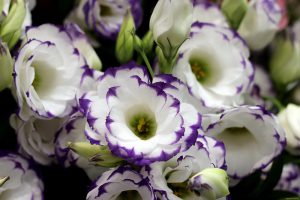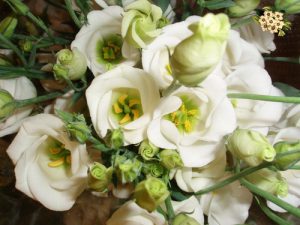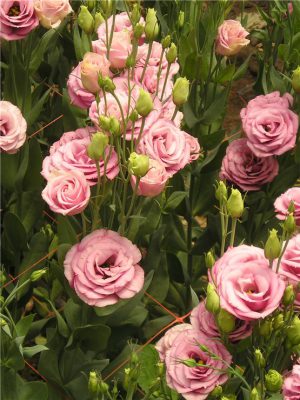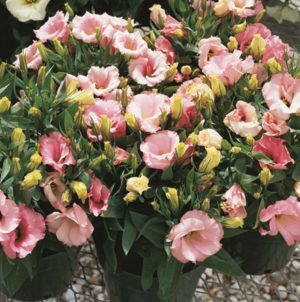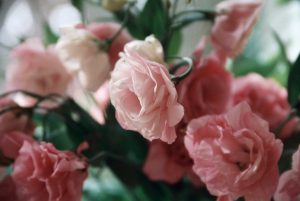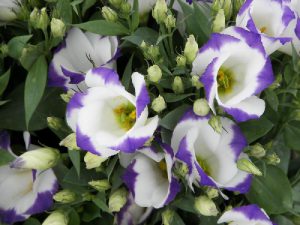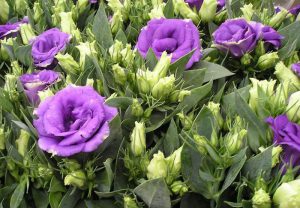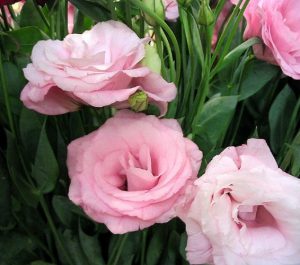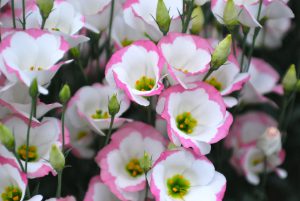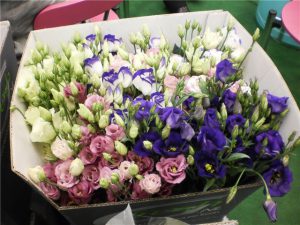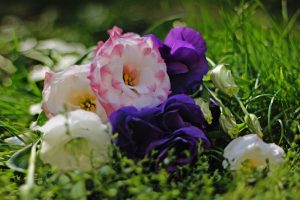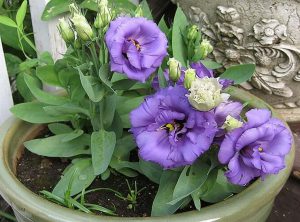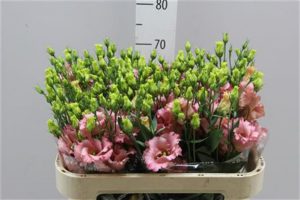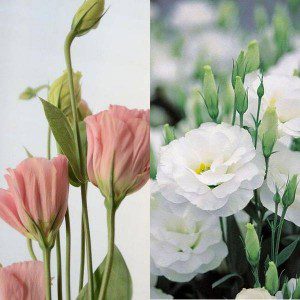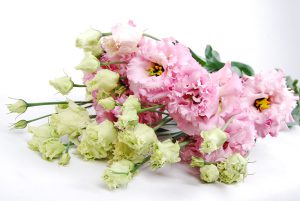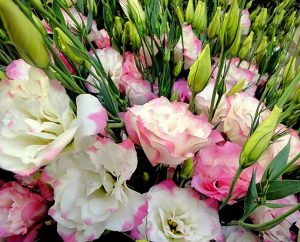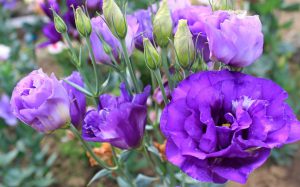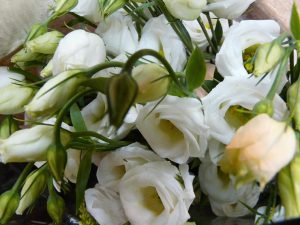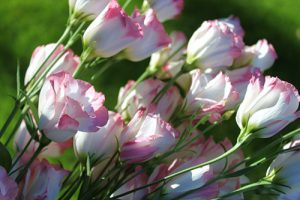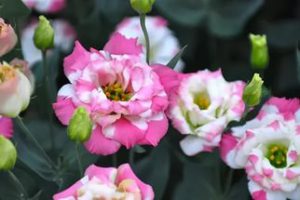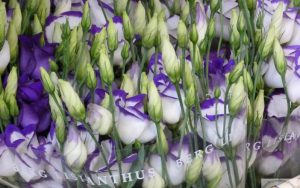Eustoma (another name is Lisianthus) is an extremely beautiful flowering plant that can be grown not only in gardens, but also at home. The species is presented in a wide varietal variety.
Each specimen differs in flower size, color and height of the bush. Eustoma gained wide popularity not so long ago, so the secrets of its cultivation are still unknown to the wide gardening masses. If you decide to use this flower in the design of a suburban area, then the advice of professionals in matters of its breeding and care will not be out of place for you.
Appearance
Eustoma has a strong and graceful stem, branching from the middle into a peduncle. The latter throws up to 40 buds. The leaves of the plant are oblong, dense, differ in a grayish-gray color. The height of the bush can be up to one meter. Opened buds transform into large flowers resembling roses, and when fully open they look like poppies. This was noticed by the people and the eustoma was instantly nicknamed the Irish rose.
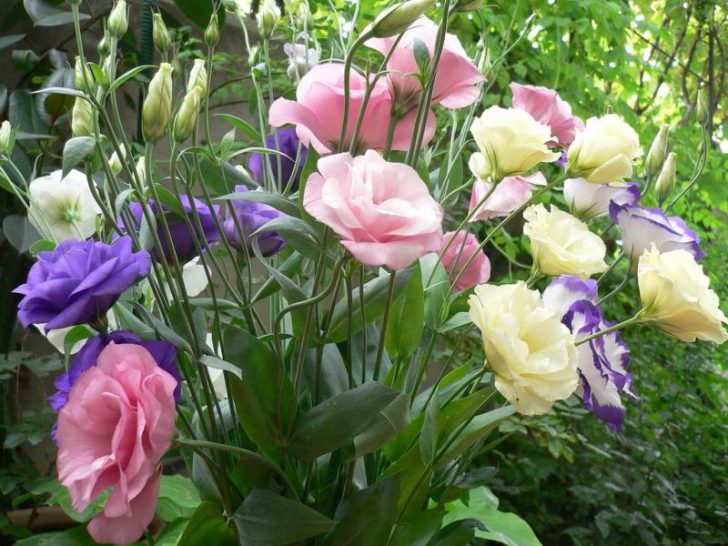
Eustoma buds resemble roses
Sometimes the plant is called the "prairie bell", according to the virgin places of growth. Her homeland is considered:
1. Mexico.
2. States of Nebraska, Colorado, Texas.
3. Northern regions of South America.
The natural color of the petals is purple, but today, the natural version is not so easy to find. Through the efforts of breeders, multi-colored hybrids grow in the gardens. The flowering period falls on the summer months and autumn.
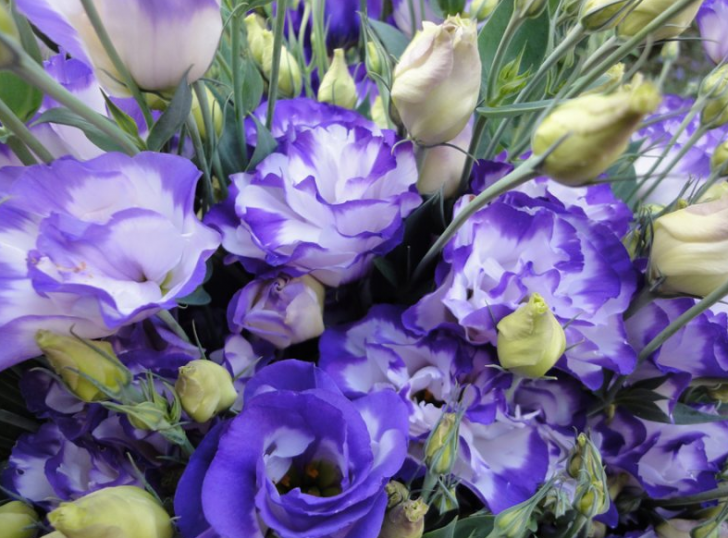
Purple eustoma
Recommended varieties
Which eustoma variety to choose, you will decide only after you decide exactly where it will grow. If the garden becomes the place of residence of the flower, then preference should be given to:
1. "Echo".
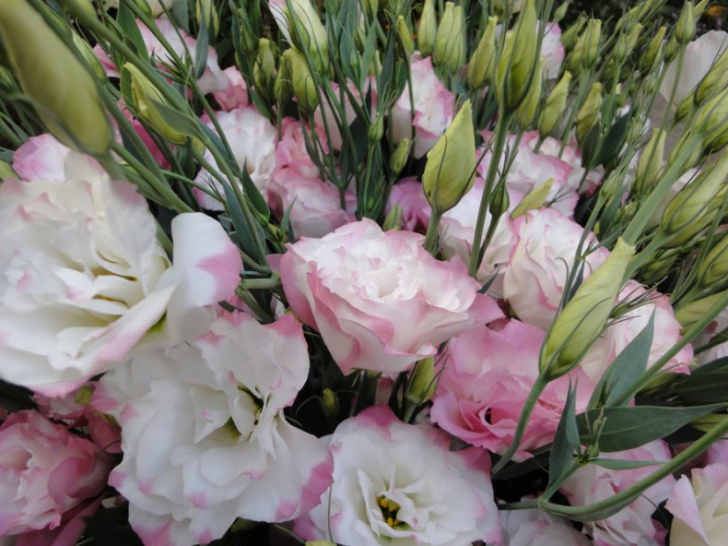
Eustoma variety "Echo"
2. "ABC".

Eustoma terry varieties “ABC”
In pots on the windowsills feel good:
1. "Florida".
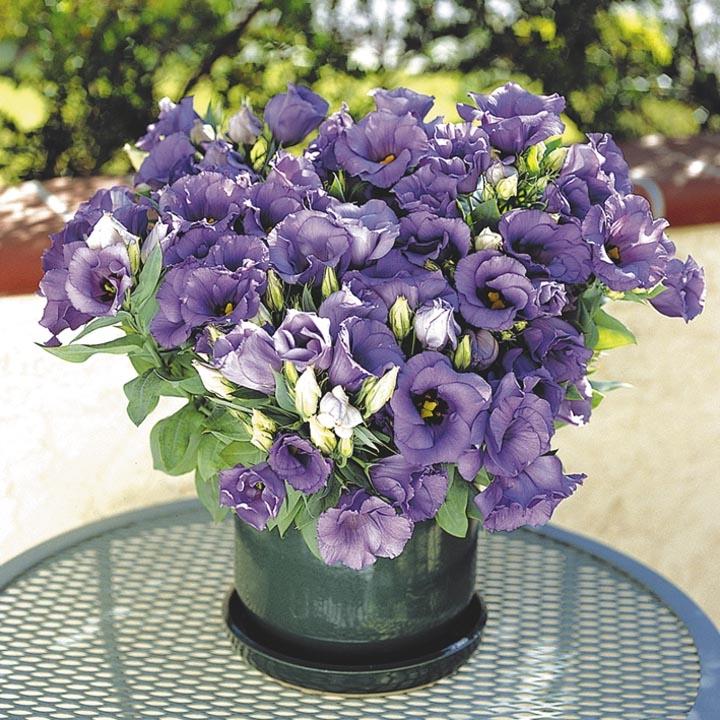
Eustoma varieties "Florida"
2. Mermaid.
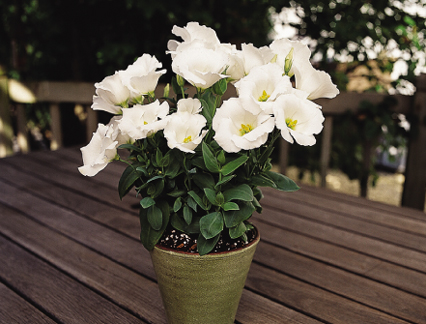
Eustoma variety "Mermaid"
Sometimes in stores you can see offers of tall eustoma varieties advertised as short. This is not an attempt to deceive the buyer. The fact is that sellers treat seedlings with special substances called retardants, which successfully suppress its growth. So the bushes develop, mature, but do not drive in height.
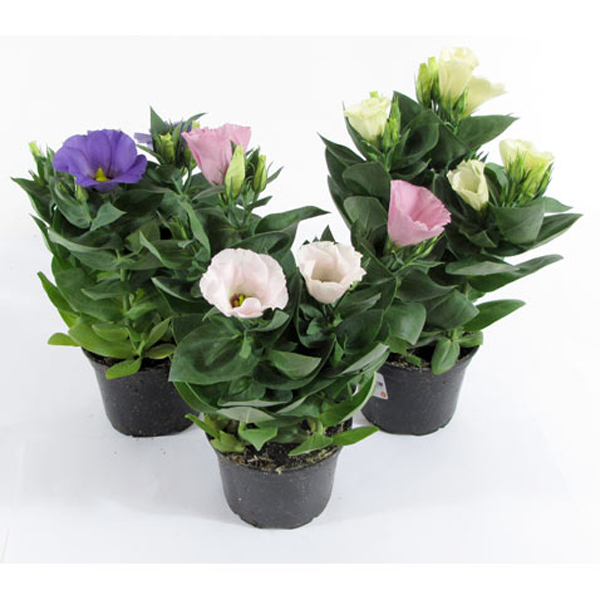
undersized eustoma
By its nature, eustoma belongs to perennial plants, but in open ground it is most often cultivated as an annual. This is due to the fact that in the conditions of the moderation of our climate, the flower rarely manages to successfully overwinter.
The flowers of the plant do not lose their fresh appearance for a long time after cutting. They are able to hold out in perfect condition for almost three weeks. This fact has made them in demand in the field of floristry and bouquets, so you can try to organize a mini-business by growing eustoma for sale.
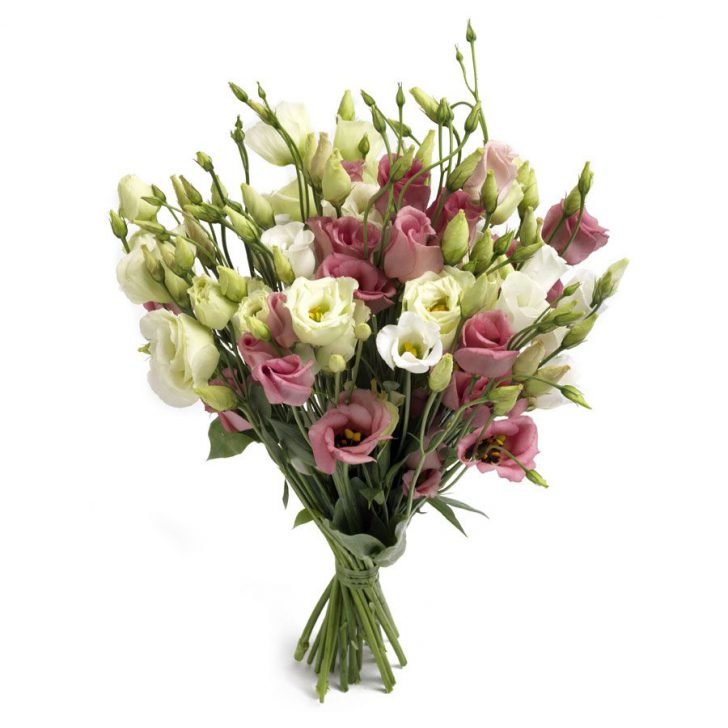
A bouquet of eustoma keeps in perfect condition up to 3 weeks
Subtleties of breeding
reproduction
Breeding a plant is not easy. The problem is that this is not implemented by dividing the hive.Adults are not ready to recover from the destruction of the root system, which is an indispensable companion of the division process. The resulting divisions will also not be accepted. The cuttings will not take root either, so seeds remain the only available propagation method for eustoma.
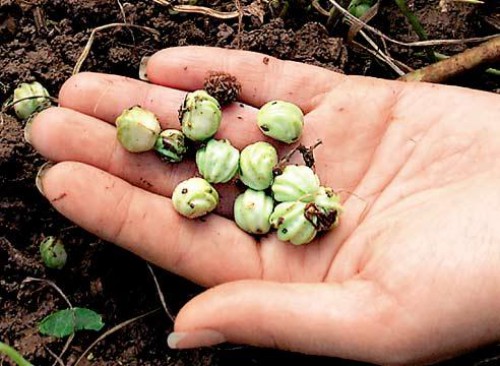
The optimal method of propagating eustoma is by seeds
It is said that it is difficult to raise Lisianthus seedlings from seeds, however, this is not entirely true. If in the first two months optimal conditions are maintained for the seedlings, then everything will pass without excesses.
When to sow?
Flower growers often sow seeds in December-January, but if you want to admire the aesthetic flowers for a longer time, then this period should be extended and the first batch of seeds put into the ground as early as November. The final sowing month will be February. Sowing eustoma later, in the spring, is already pointless. She simply will not have time to bloom, dying under the first snow. The secret is that the release of buds falls on the 15-20th week of growth, so consider whether the plant in your climate will have time to live a full cycle?
The nuances of the sowing process
It is recommended to sow the seeds in single cups filled with a moistened soil mixture, consisting of:
1. Peat soil.
2. Perlite.
3. Sand.
In this case, the soil will turn out to be more loose and "breathing". If there is no desire to mess with the preparation of the soil, then you can purchase a ready-made version of the substrates intended for growing saintpaulias.
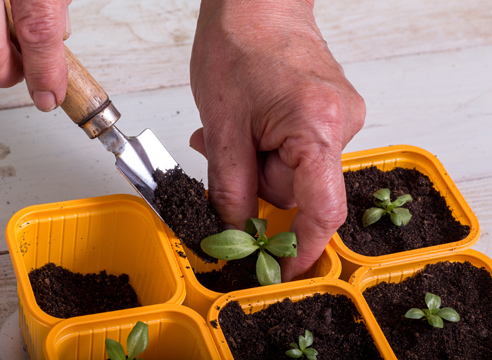
Eustoma seedlings in disposable containers
Sow seeds superficially, without significant deepening. They just need to be lightly pressed into the soil. 3-5 pieces of seeds are placed in each container (calculation for picking). The sown cups are covered with polyethylene to create a greenhouse effect and left alone until the seedlings germinate.

Seeds just need to be pressed into the soil a little
You can try another planting method for which you need peat tablets. Each of the tablets is alternately soaked in water. The seed is laid in the recess made, without subsequent pressing down and sprinkling with earth. The “charged” tablet is sent to a disposable cup, which is covered with a lid. In order to ensure air access, the cover will have to be periodically lifted. With this method of germination, plants tolerate transplantation more easily and do not get sick, because root injury is completely prevented.
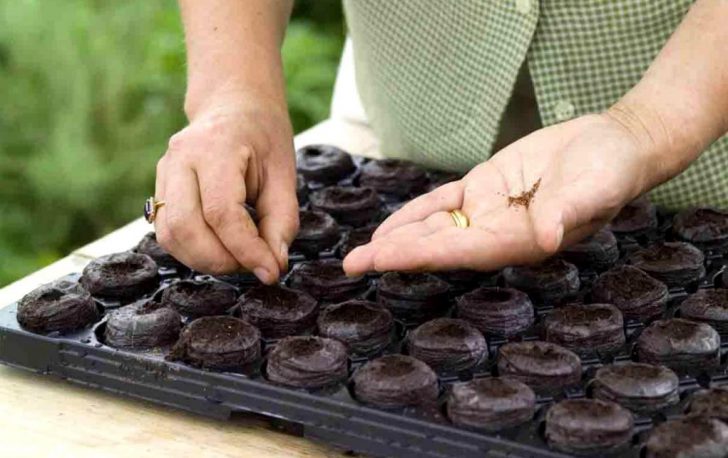
Planting eustoma seeds in a peat tablet
How to create comfortable conditions for seedlings
“In the first months of growth, eustoma needs bright but diffused lighting, then the seedlings will germinate compactly and will not be too elongated”
In order for the seedlings to turn out strong enough, the seeds initially need to create good conditions for development. Not the last role in this matter will be played by lighting and temperature conditions. In the first months of growth, eustoma needs bright but diffused lighting, then the seedlings will germinate compactly and will not be too elongated. Fluorescent lamps are capable of providing a similar light flux. By the end of winter, seedlings can be moved to the sunniest window sill. Under the rays, even if the sun is still very weak, the seedlings will sharply increase in growth.
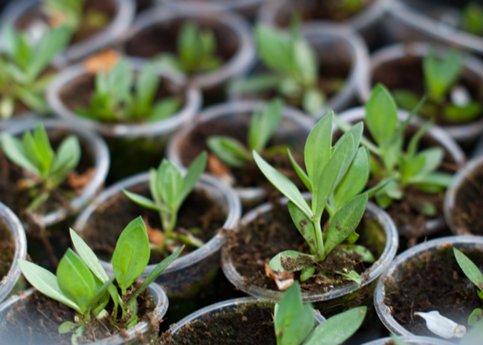
Eustoma seedlings need bright diffused light
Ideally, you need to equip a rack for growing eustoma seedlings, but if there is no place in the house for such, then you can get by with an ordinary shelf.
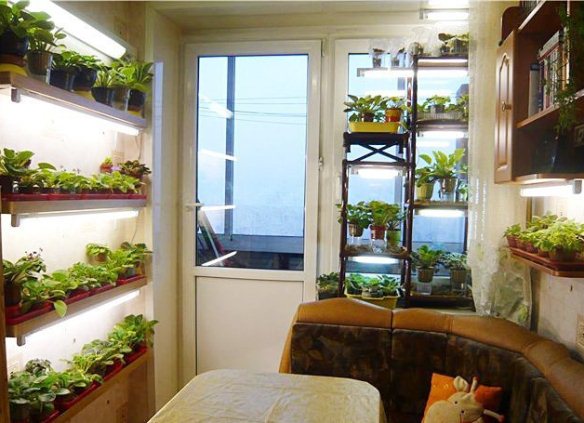
Eustoma seedling racks
The lower temperature limit of development for seeds is 20o, the limit is 25o. Subject to the thermal regime, the first shoots will appear on the 10-15th day. Do not be discouraged if in the first two or three months the growth of eustoma is practically not noticeable. That's the way it should be.
seedling health
So that the seedlings do not get sick and turn out strong, in the first two months they can be watered with foundation. The solution is prepared before use. A teaspoon of the substance is dissolved in a liter of water.To improve the development of plants, it is worth spraying them once with zircon or epin.
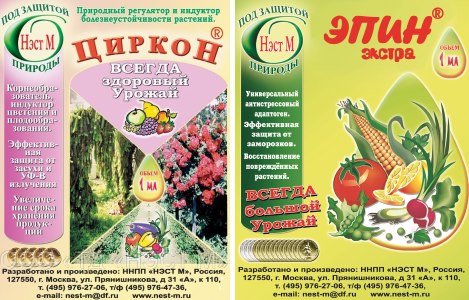
Zircon and epin for seedling growth
After such treatment, the seedlings actively start growing. In addition to the stimulating effect, the drugs have a protective effect and prevent the development of the black leg.
picking process
If a month and a half has passed since the emergence of the seedlings, then it's time to start picking. Planting in individual pots is a painstaking task and requires extra care. Jewelery work is the key to the rapid growth of Lisianthus in the future. A thin awl will be a good helper in extracting tiny bushes from the soil.

Picking eustoma seedlings
A hole in a new pot is made with a pencil. The seedling is inserted into the recess to the very leaves. After transplanting, lightly press the soil and also slightly moisten it. The process ends with the creation of the greenhouse effect. You can put a regular bag on the pot or close the seedling with an inverted plastic cup.
back to index ↑Landing in the ground
The best period for transplanting seedlings into the ground is the beginning of July. By this time, seedlings and seedlings will have time to form developed shoots and strengthen the root system, so they will take root without problems. Upon completion of the adaptation process, the plant will almost immediately throw out flower stalks. The flowering period will last until frost.
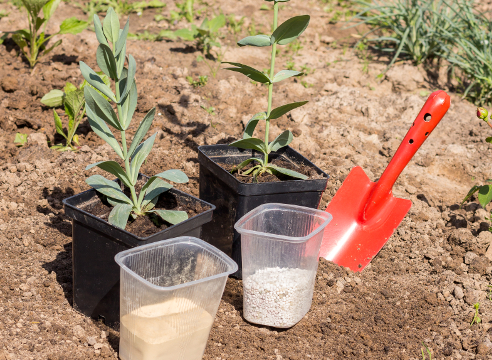
Planting eustoma in open ground
In principle, the eustoma is ready for planting in a flower bed after the formation of the first 4-8 full-fledged leaves. Feeling the open ground, the bush begins to grow actively and after a couple of weeks the seedlings will not be recognized.
Planting seedlings should be carried out in the evening. Take out each specimen along with the ground and lower it into a previously prepared, well-watered hole. Fill the remaining space with earth. Do not try to bury the roots. Leave them at the same depth they were in the glass.

Transplant into prepared hole
Cover the transplanted bushes with a cut of a plastic bottle. Shelter will protect at first not strengthened shoots. In two weeks, the "sarcophagus" can be removed.
Where to plant and in what soil?
A flowering plant prefers sunny places, in extreme cases - partial shade. Only there it can reveal itself in all its stunning beauty.
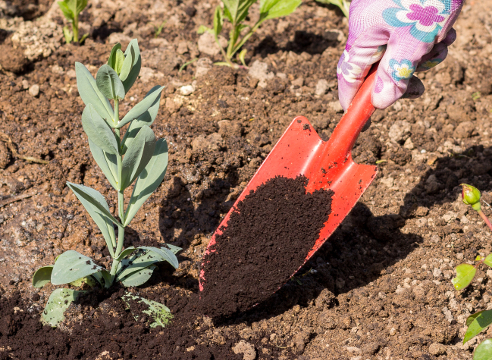
Eustoma prefers sunny places
As for the quality of the soil, it must be perfectly drained, with the right level of acidity. pH values 6.5 - 7.0. Hanging the acidity level will provoke a slowdown in plant growth. Eustoma grows well on black soil.
Watering
Having migrated to the garden, eustoma will have to endure both drought and heat. The plant will cope with the task, although, of course, such conditions will not give it beauty. So think about regular watering. The soil should be moist, but in no case overfilled, so the next watering should be carried out no earlier than the top layer of the earth dries.
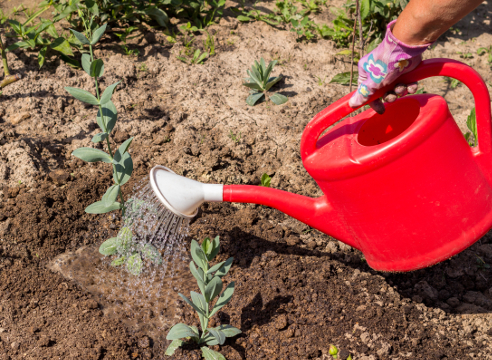
Eustoma needs regular watering
When watering eustoma, you should try not to get it on the leaves. Pour water directly under the root. So you will protect your flowers from damage by fungal diseases. For the same reason, plants are not irrigated from a spray bottle.
Seeds: collect or buy?
This plant is well pollinated, so after a while boxes full of small seeds will appear on it. The latter give good germination. If you breed a hybrid species of eustoma, then they can be collected and used for reproduction. The next generation will be similar in almost everything to the parent bushes, but the seeds that appear on them will give rise to seedlings with already quite strong distinctive features.
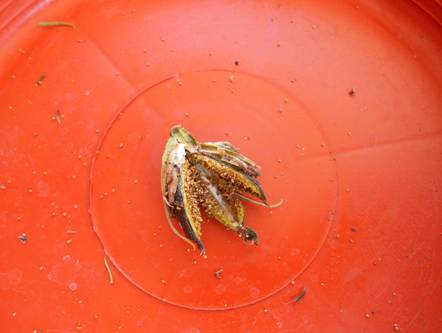
Box with eustoma seeds
As summer residents say: eustoma will be reborn, and you will not get a tinted flower. As you can see, if you do not have seeds from first-year bushes, then it is better to purchase varietal seed packs in the store.
back to index ↑How to save eustoma in winter
“Before you pick up the lisianthus from the garden, you should treat the bush with preventive measures to rid it of pathogenic spores and pest larvae”
We have already mentioned that eustoma in our area is grown as an annual, however, if desired, you can try to save adult bushes for the next season. To do this, they will have to be dug up and, transferred to pots, taken home for the winter. Some of the gardeners initially go to the trick, planting the plant directly in pots, then in the fall they get plants ready for wintering. It remains only to remove the buried pots from the ground.
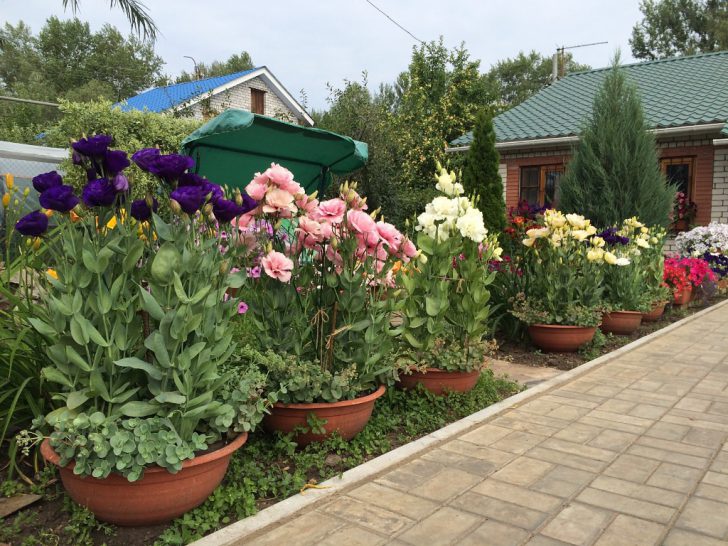
Eustoma in pots
The process of adaptation to the conditions of the premises, after life in the open field, sometimes proceeds not at all smoothly. The period of acclimatization to new conditions can be delayed for a month. Plants can hardly tolerate the change of street coolness to home warmth and low light. They may weaken somewhat and even begin to wither away. This is an occasion to start moving the eustoma out of the garden early, around the end of August. At this time, outdoor and room temperatures are almost identical.
To help the plant get used to the lack of light can be a short stay on a closed loggia. In parallel with these actions, watering is limited. This is a necessary measure, because in the adaptation period the bushes will not be able to absorb the previous volumes of water.

In winter, the light from the window will save the eucoma from light deficiency
Sometimes you can find recommendations for pruning eustoma before planting in a pot, and it is recommended to do this almost at the root. After the procedure, the plant often throws out basal shoots.
Before picking up the lisianthus from the garden, the bush should be treated with prophylactic agents to rid it of pathogenic spores and pest larvae. It should not cause damage to houseplant diseases.
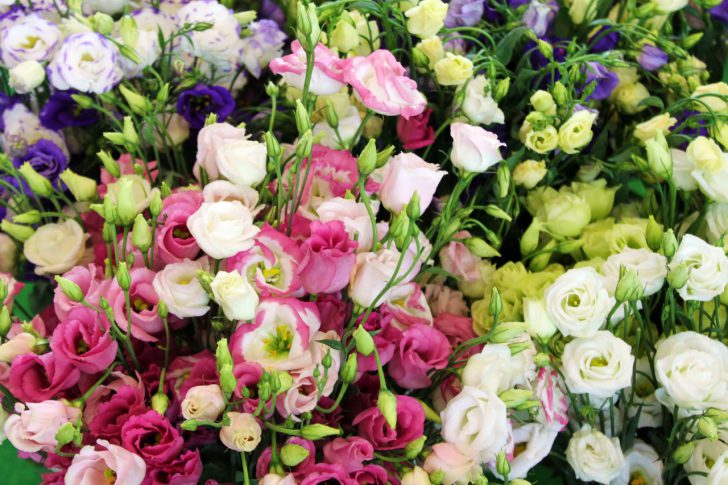
Eustoma is a real decoration of the garden
No matter how well you take care of your eustoma, however, after five years you will still have to part with it, because with the change of generation it will produce fewer and fewer flowers, and their sizes will be smaller. Sometimes the plant dies on its own, for no apparent reason. By this moment, you need to be philosophical and not reproach yourself for the lack of attention to your beloved brainchild.
back to index ↑Conclusion
Growing eustoma requires patience, but the result is amazing, so if your garden does not yet have bushes of this magnificent plant, then it's time to think about acquiring it.
Photo gallery - eustoma
Video



